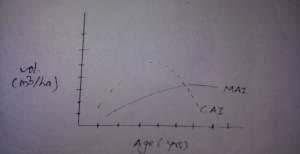Nepal has diverse climatic and topographical features which results in the contribution of different forest types in Nepal.Adapted from J.k. Jackson, here is the list of different forest types of Nepal.
- Tropical forest (up to 1000m)
i.Shorea robusta Forest – The dominant species is Sal and other associates are Terminalia alata, Anogeissus latifolia, Syzyzium cumini,etc.
ii.Acacia catechu- Dalbergia Sissoo Forest- It is mostly found along streams and rivers in deposited alluvium and often gravelly and will be eventually be succeeded by Sal or other types of forest.
iii. Other Riverain forest- This types of forest is not large and extends far from the stream banks. Jamun is dominant in western Nepal.
iv.Grassland- This type is usually found on poorly drained clays. Grass species such as Saccharam spontaneum, Eulaliopsis bipinata, Phragmites Karka.etc are found.
v.Terminalia- Anogeissus deciduous hill forest- It is confined to dry south facing slopes in the larger river valleys and up to 1200m in Western Nepal.
- Sub-Tropical Forest (1000m-1700m in East and 1000m 2000m in West)
i.Pinus roxburghii forest- It is found in the west of Nepal extensively. In the east, it is found in large river valleys. It is almost pure. In the far west at higher altitude, it may be associated with Olea ferruginea, Pistacia spps, etc. In transitional areas, it may be mixed with Schima wallichi or Shorea robusta.
ii.Schima-castanopsis forest – This Schima- castanopsis forest covers very large areas of the mid-hills, but much of it has been cleared for cultivation and very small passages are left.
iii.Alnus nepalensis forest- Alnus nepalensis is dominant and almost pure and associated in some places with Lyonia ovalifolia.
iv.Riverain forest with Toona and Albezia species- It is confined to narrow strips along streams and is very mixed in composition.
- Temperate Forest (2000m-3100m)
i.Lower temperate forest ( 2000m- 2700m)
a.Quercus leucotricophora and Quercus lanata
b.Quercus floribunda forest
c.Quercus lamellose forest
d.Lower temperate mixed broad leaved forest with abundant lauraceae
e.Pinus wallichiana forest
ii.Upper temperate forest (2700m – 3100m)
a.Quercus semecarpifolia forest
b.Upper temperate mixed broadleaved forest
c.Rhododendron Forest
d.Upper temperate coniferous forest
4. Sub- Alpine forest (3000m-4200m)
i.Abies spectabilis forest
ii.Betula utilis forest
iii.Rhododendron forest
iv.Juniperous indica steppe
v.Caragana steppe
- Alpine forest (up to 4500m)
It has no trees, but shrubby Rhodendrons and Junipers and some other shrubby species are found at lower elevations up to about 4500m.

